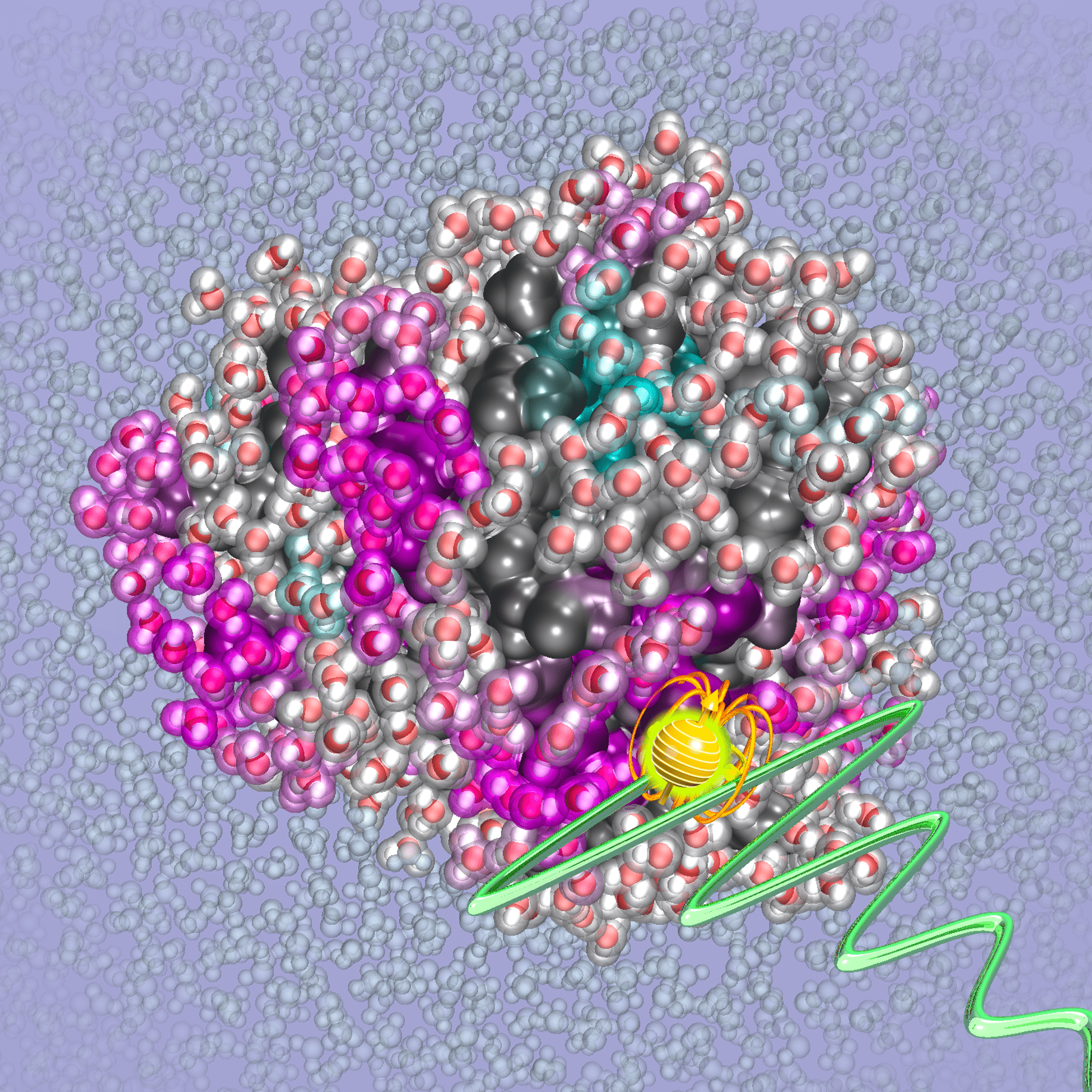Interdisciplinary Research Topics
An ambitious and general goal of the laboratory is to turn NMR from a bulk sensor to a sub-nanometer scale characterization tool, and in doing so make discoveries in spin physics, solvation science, molecular biochemistry, and soft materials science.
The Han lab interfaces with many different research communities given the interdisciplinary nature of its research enterprise and given its drive and willingness to re-invent itself to seek new solutions to solve critical problems. Critical problems are defined by ones that have an impact on advancing the human conditions that include gaining a fundamental understanding of the world and phenomena around us that may see an application soon or only decades later, as well as finding solutions to more immediate challenges in sustainability and health. The core research communities for the Han lab are the nuclear and electron spin magnetic resonance community, including the spin chemistry and physics community, the water and liquids community, the biophysics community and the community focusing on the study of neurodegenerative diseases, in particular the pathological aggregation property of tau proteins.
Find out more about our current work in the following research sections or click on the publications tab to see what has been done so far.
Design spin cluster for NMR signal amplification and quantum resonance sensing
To reveal “invisible” NMR signal of surfaces, active sites, and functional species in catalysis, molecular recognition and quantum materials using out of the box tools. What if the larger quantum sensing community has a large blind spot by not considering quantum resonance phenomena? What if electron spin cluster design can transform dynamic nuclear polarization (DNP) enhanced NMR, hyperfine electron paramagnetic resonance (EPR) spectroscopy and nanodiamond based quantum sensors? Find out more by contacting us.
Know More
Water directed protein assembly for shape control and templated self-replication
To understand, control and engineer tau protein assembly and aggregation pathways and tau prion surface activity. The ability to design and select aggregation pathways allows us to design tauopathy-specific mini prions and high-quality tau fibrils with exquisite 3D spatial control of protein residues and 1D phosphoryl wires with high ³¹P spin entanglement in water.
Know More
Water as a shape-shifting and active biological building block
To reveal long-standing questions on the structure and dynamics of water on proteins, membranes to catalyst support surfaces, and to control long-range ordering of water for enhanced sensing and mechanical actuation.
Know More



